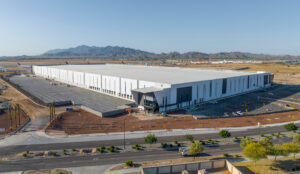Leading design-build firm LGE Design Build released its second quarter Construction Delivery Outlook Report that monitors and analyzes the economic uncertainty and changes within construction labor, supply chain, material pricing, inflation and overall demand.
“The recent turbulent years have taught us that the construction industry is resilient but that we need to be persistent in our mission to be forward-thinking in order to find creative solutions to face these challenges head on,” said Blake Wells, vice president of preconstruction at LGE Design Build. “The industry is expected to continue to experience obstacles with skilled labor, material volatility and supply chain throughout 2023. However, we remain optimistic about the construction outlook as we anticipate the demand for services will remain strong.”
A summary of the Construction Delivery Outlook key findings include:
Construction Labor
The construction labor shortages are not going to disappear anytime soon. Contractors continue to receive significant demand for mega-projects related to chip manufacturing plants and clean energy facilities while still struggling with a shortage of younger workers entering skilled trades. Other notables:
- On a national level, $1 billion is being invested in additional construction spending. With this in mind, the construction industry will need to attract 546,000 new workers in 2023 in order to keep up with demand.
- According to projections from the Arizona Office of Economic Opportunity, the construction employment sector in Arizona is expected to grow at an annual rate of 5.6% to 200,434 jobs by Q2 2023.
- According to the Texas Employment Forecast, there will be a 2.8% increase in all jobs in 2023 totaling 385,000. By the end of December, overall employment is expected to reach 14.1 million.
Supply Chain
Over the past six months, freight and supply chain issues have improved but suppliers are now faced with the challenge of balancing softening demand, while simultaneously dealing with the effects of past price increases and maintaining competitiveness. Other notables:
- The major disrupters that supply chain leaders are still experiencing include transportation, production, raw material costs, geopolitical uncertainties and a lack of reliable transportation or shipping capacity.
- According to a survey by Coupa Software, 79% of supply chain leaders surveyed indicated that their company plans to invest in agility and resiliency for their supply chain in 2023. 83% are already investing in digitizing their supply chain to reduce overall risk and avoid supply chain issues.
Material Costs
Unpredictability within the supply chain is impacting all aspects of the construction process, including raw materials and transportation. The ongoing war in Ukraine has also led to supply barriers and increased export prices for materials such as copper and aluminum. Other notables:
- Prices for lumber and structural/miscellaneous steel have generally trended downward in Q1 but they are not expected to return to pre-pandemic prices.
- The costs for electrical and roofing materials remain high and are not expected to change anytime soon, even after the industry experienced some small relief.
- Gypsum has risen in price for seven consecutive quarters but there are signs that it may stabilize in Q2.
Demand by Product Type
According to the Q1 2023 Construction Starts Forecast Report, there are significant variations in the year-over-year percentage changes for type of structure in square feet millions for each category of construction in the U.S. between 2022 and 2023. Other notables:
- For residential construction, there was a decrease in activity of 2.6% in 2022 and a projected further decrease of 1.1% in 2023, suggesting a slowing down of growth or possibly a contraction in the residential construction market over the next year.
- The commercial construction market, including office space, also saw a decrease in activity in 2022 with a year-over-year decline of 3.8%. However, there is a predicted rebound in 2023, with an increase of 0.8%.
- The industrial construction market experienced an increase in activity in 2022 with a year-over-year growth of 84.8%. However, this is followed by a significant projected decline of 28.9% in 2023.
To view the full Construction Delivery Outlook report, click here.
